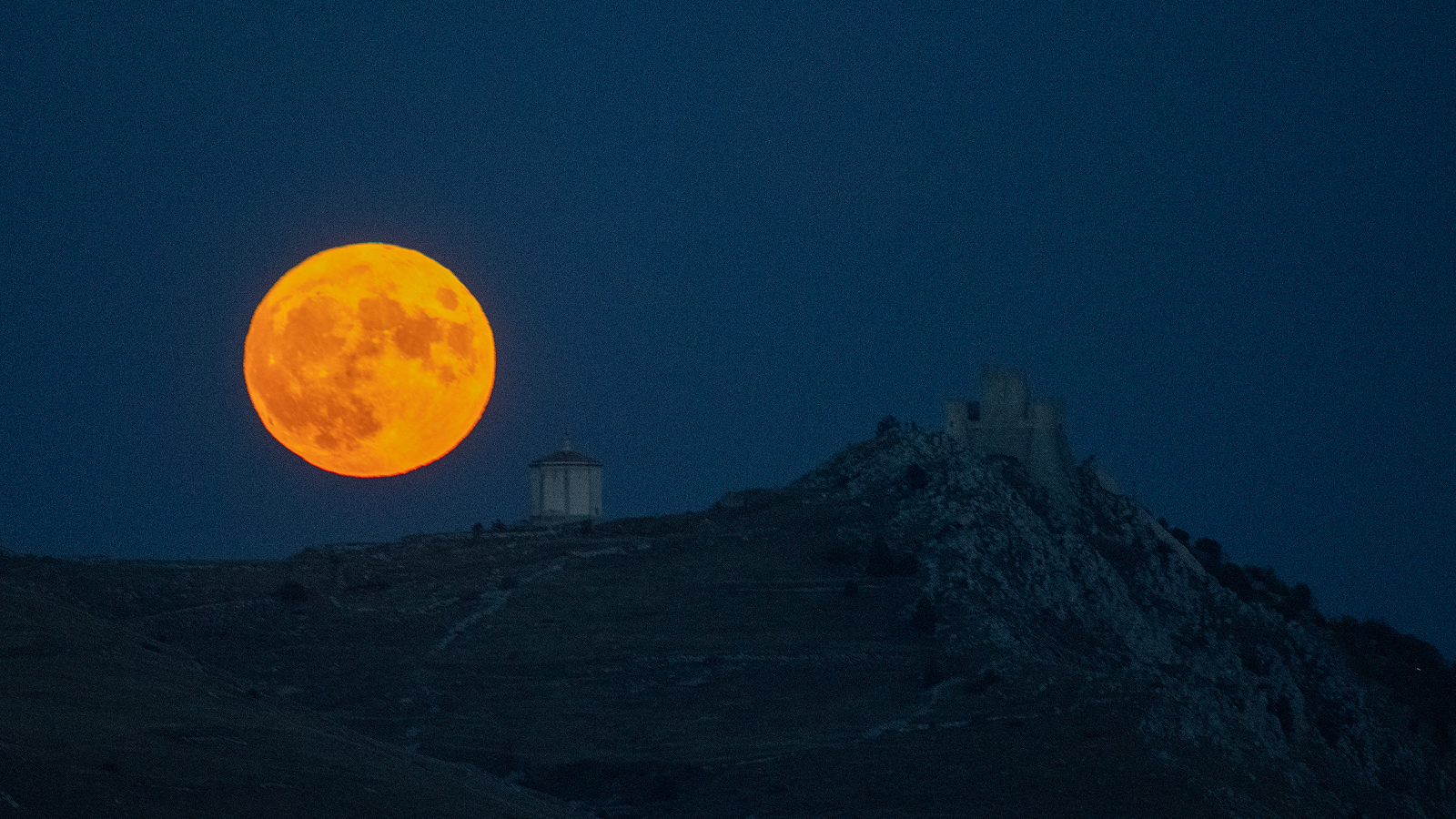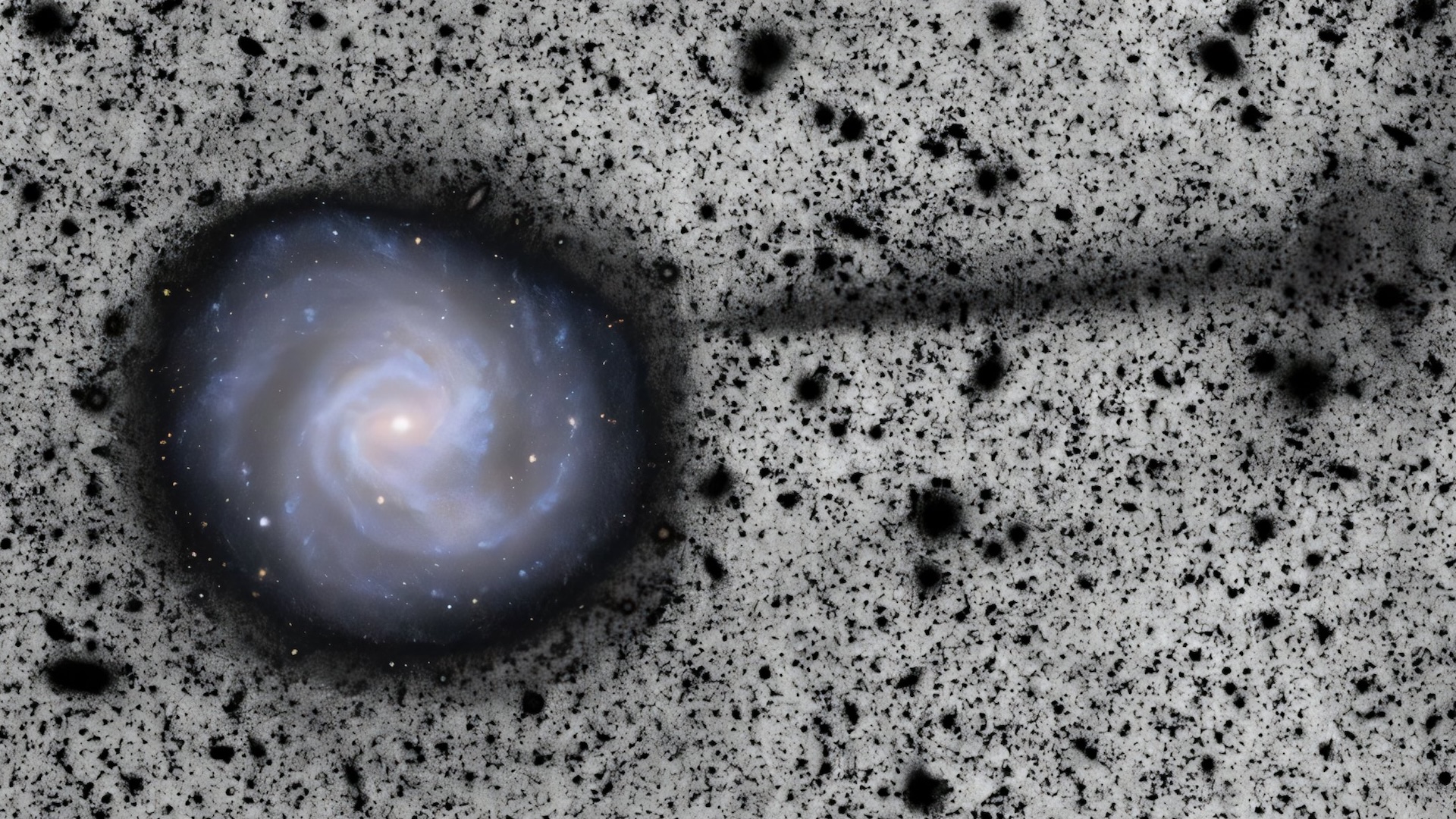Harvest Moon 2025: How to watch a rare October supermoon rise tonight
The famous Harvest Moon — the first of three supermoons of 2025 — will be the first full moon of autumn when it rises tonight (Oct. 6-7).

Tonight(Oct. 6) the first supermoon of 2025 will rise big and bright into the autumn sky. Dubbed the Harvest Moon — one of the most famous full moons of the year — it is the first full moon of autumn in the Northern Hemisphere, traditionally used to mark the end of the harvest season.
The moon will officially turn full at 11:47 p.m. EST on Monday (3:47 p.m. UTC on Tuesday, October 7) and will appear bright and full on the nights immediately before and after the peak. Dusk on Tuesday will be the best time to see the full moon appear on the eastern horizon, but it’s also worth looking east at dusk on Sunday (Oct. 5) to see the almost-full moon shine just above Saturn, which is about as close to Earth as it ever gets.
According to Almanac, the Harvest Moon is the name given to the full moon closest to the September equinox, which falls on September 22 this year. Its nickname comes from farming folklore about how the full moon’s light enables farmers to gather crops late into the night, not only on the night of the full moon, but also on the nights surrounding it. While September often hosts the Harvest Moon, the lunar calendar designates October as the host in 2025.
Related: Best telescopes 2025: Explore planets, galaxies and beyond
For the best views of the Harvest Moon on Tuesday, choose an elevated spot with an unobstructed eastern horizon. The moon’s golden-orange glow will be most striking during the 15-20 minutes after local moonrise wherever you are. Your naked eyes are all you need, but a good pair of stargazing binoculars will get you a great view of lunar craters and our natural satellite’s dark lava plains, called mare.
This year’s harvest moon also doubles as a supermoon, appearing slightly larger and brighter than average. The moon will sit just 224,599 miles (361,457 kilometers) from Earth, about 10% closer than usual (238,855 miles, or 384,400 km, according to NASA. A supermoon occurs because the orbit of the moon around Earth is slightly elliptical, so each month there’s a closest point (perigee) and a farthest point (apogee).
A supermoon is the colloquial term for a perigee full moon. This month, the moon is at perigee 1.3 days after it turns full — so the Harvest Moon will actually be at its closest and largest-looking late at night on Wednesday (Oct. 8). That’s also when “shooting stars are possible” as the peak of the annual Draconid meteor shower takes place. While up to 10 meteors per hour are expected, the moon’s brightness may make them harder to spot.
Get the world’s most fascinating discoveries delivered straight to your inbox.
There’s much more to come in October, with two closest approaches to Earth of two comets — Lemmon (C/2025 A6) and SWAN R2 (C/2025 R2) — set to coincide with the peak of the Orionid meteor shower overnight on Oct. 21-22 under the dark skies of a new moon.
The next full moon, the Beaver Moon, will rise on November 5 as the largest supermoon since 2019.
Editor's note: This article was updated at 12:20 p.m. ET on Monday (Oct. 6) to indicate the full moon rises tonight.

Jamie Carter is a freelance journalist and regular Live Science contributor based in Cardiff, U.K. He is the author of A Stargazing Program For Beginners and lectures on astronomy and the natural world. Jamie regularly writes for Space.com, TechRadar.com, Forbes Science, BBC Wildlife magazine and Scientific American, and many others. He edits WhenIsTheNextEclipse.com.
You must confirm your public display name before commenting
Please logout and then login again, you will then be prompted to enter your display name.
